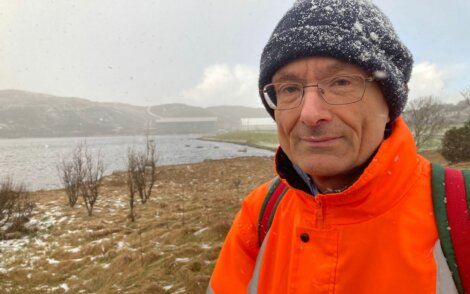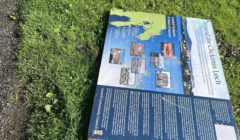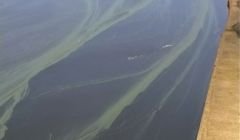Community / Clickimin Loch almost as salty as the sea
Water samples taken in 2023 have shown a dramatic decline in freshwater plankton, with higher salinity levels leading to a decrease in waterfowl around the loch
THE HIGH salinity levels in the water of Clickimin Loch have been identified as one of the possible reasons for its environmental decline.
A meeting by the Friends of Clickimin Loch Group on Monday night heard that salinity levels similar to that of the sea mean no weeds can grow, and invertebrates primarily feeding on these weeds having stopped using the loch.
And with no invertebrates there is no food source for waterfowl. The algae levels in the loch are also too high, which provides less oxygen for fish.
Chair of the group, Arwed Wenger, welcomed around 15 interested people for a discussion at St Magnus Church hall, in Lerwick.
The decline of wildlife and waterfowl at the loch has been observed by many people who live nearby or use the loch for walks.
One member of the public said: “I’ve looked onto Clickimin loch for around 60 years, and I used to see all sorts of birds and anglers on the loch. But now there’s nothing and it’s so sad to see.”
Meanwhile Kenny Gifford conducted his own water sampling in August 2023, finding the salinity levels near the Clickimin Broch were almost as high as saltwater levels in the sea.
The recordings from the broch area were 30ppt while sea water salinity sits at 30-35ppt. He also recorded saltwater plankton, while noting a complete absence of freshwater plankton.
Gifford and his son David run an online blog identifying microscopic life in freshwater lochs around Shetland and have visited almost 100 lochs and burns around Shetland.
Wenger said he had tried to arrange for a second set of water sampling to take place, however received little interest from SSQC Ltd, a Shetland-based quality assurance laboratory, and has had to outsource this to a company on the Scottish mainland.
Become a member of Shetland News
He said: “The approach with the laboratory in Scalloway was disappointing. On the first approach they didn’t get back to me, and on the second approach they came back after some time to tell me they were not interested in dealing with our issue.”
Wenger accompanied Gifford in August 2023 when the first water samples were taken, and has since commissioned a company based in Thurso to undertake the next set of professional water samples for analysis. Two workers are due to arrive in Shetland this week.
Another cause for concern is the culvert flap at the north end of the loch which appears not to be functioning as it should. It runs from the loch to the sea underneath the large roundabout near Tesco.
The flap falls under the responsibility of the Shetland Islands Council roads department, who have confirmed they are going to investigate the issue.
Members of the public highlighted that the flap does not allow for migratory fish such as flounders to pass through from the loch to the sea, and may also be contributing to the high salinity levels.
The action group was formed about a year ago with the aim of getting to the bottom of the poor water quality of the loch amid little interest from the public sector such as the SIC.
They have received funding from Lerwick Community Council to investigate, and had support from the Shetland Anglers Association.
Anyone who wants to get involved or put forward their views on the Clickimin loch can contact Arwed Wenger at clickimin-loch.contact@arwed.net
Become a member of Shetland News
Shetland News is asking its many readers to consider paying for membership to get additional features and services: -
- Remove non-local ads;
- Bookmark posts to read later;
- Exclusive curated weekly newsletter;
- Hide membership messages;
- Comments open for discussion.
If you appreciate what we do and feel strongly about impartial local journalism, then please become a member of Shetland News by either making a single payment, or setting up a monthly, quarterly or yearly subscription.
















































































